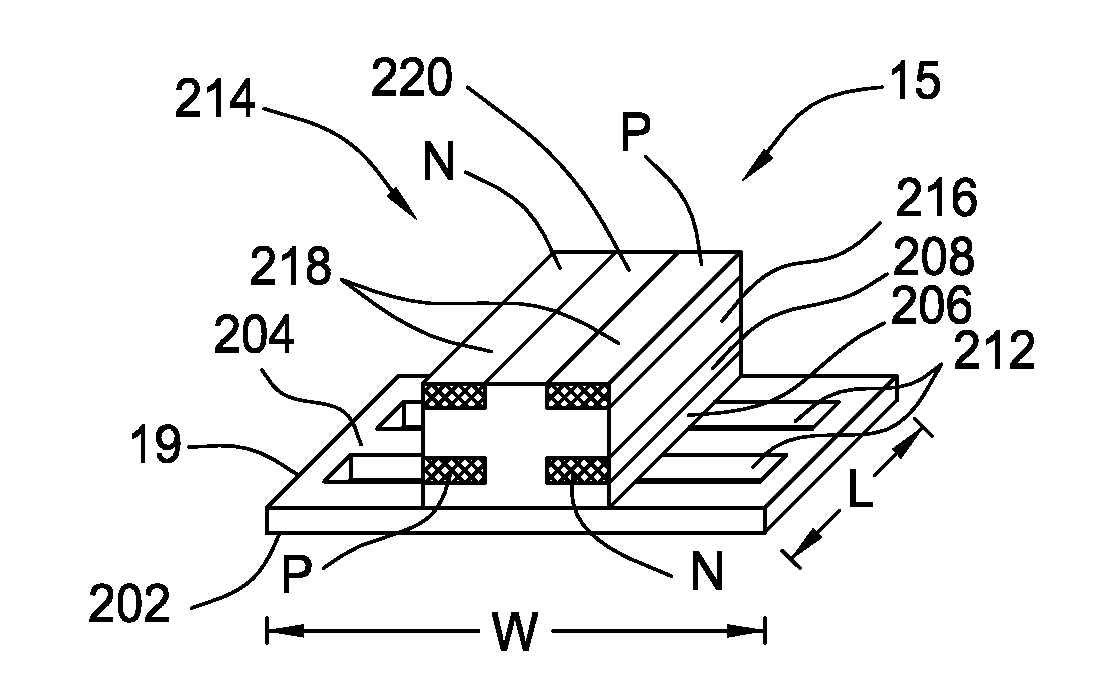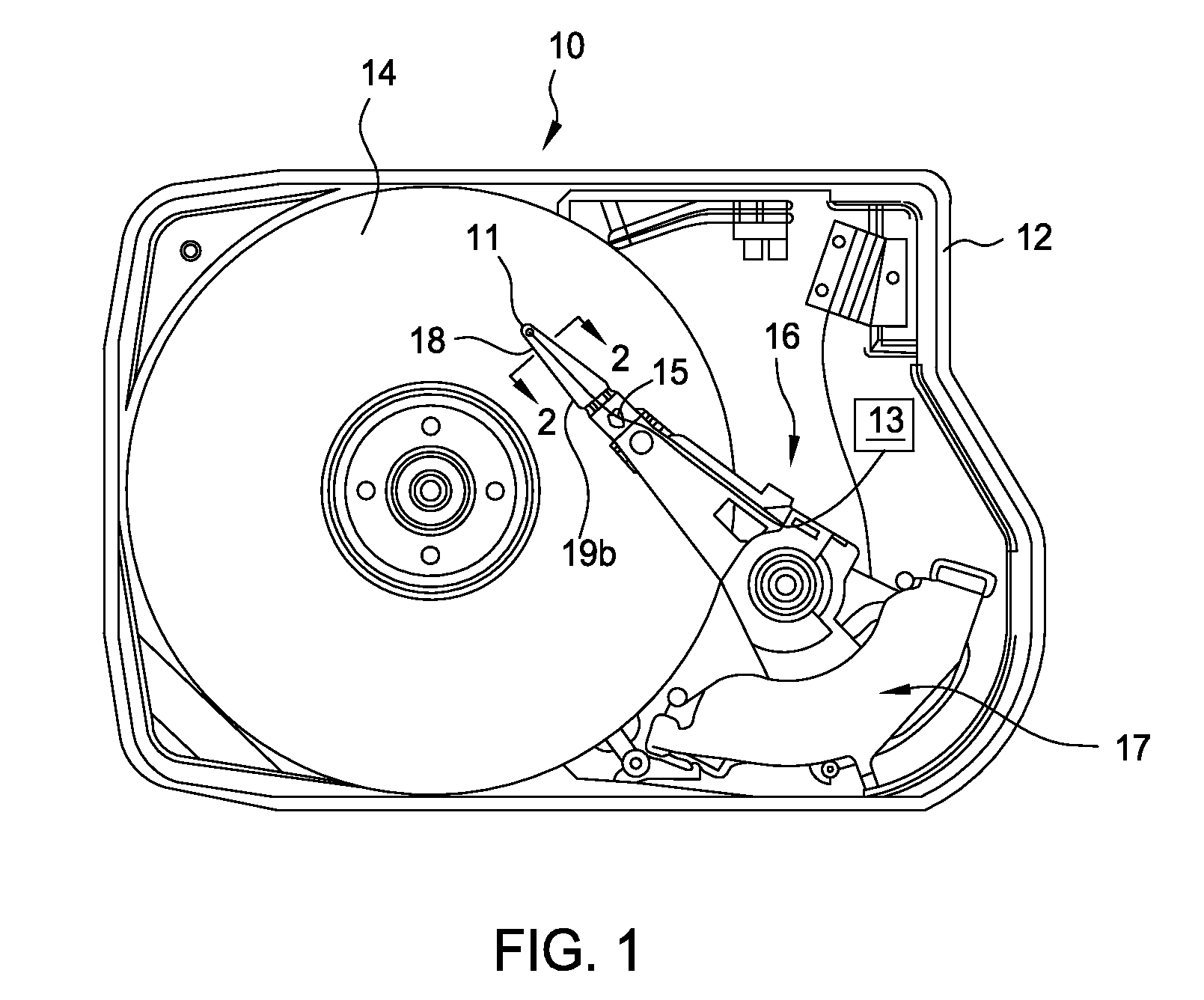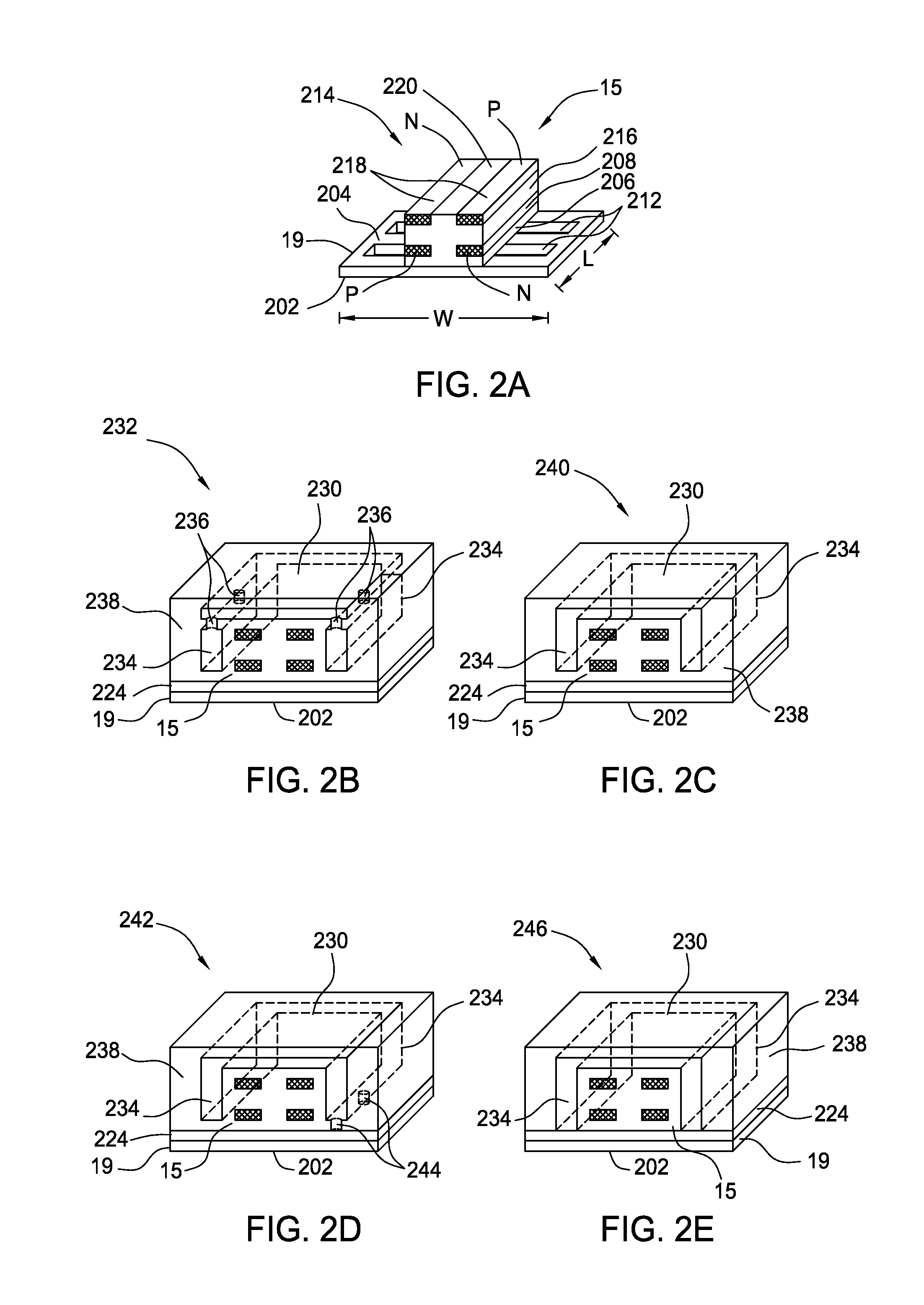Interleaved conductor structure with offset traces
- Summary
- Abstract
- Description
- Claims
- Application Information
AI Technical Summary
Benefits of technology
Problems solved by technology
Method used
Image
Examples
sixth embodiment
[0035]FIG. 2C depicts a cross sectional isometric view of the interleaved conductor structure 240. The interleaved conductor structure 240 is substantially similar to the interleaved conductor structure 232 of FIG. 2B. However, in the interleaved conductor structure 240 the conductive sidewalls 234 extend completely to the top conductive shield layer 230, without the need for the plurality of vias 236. By extending the conductive sidewalls 234 to the top conductive shield layer 230, the electrical connection between the conductive sidewalls 234 and the top conductive shield layer 230 is improved, and a more continuous shield structure is formed.
seventh embodiment
[0036]In FIG. 2D a cross sectional isometric view of the interleaved conductor structure 242 is shown. The interleaved conductor structure 242 is substantially similar to the interleaved conductor structure 240 of FIG. 2C. However, in the interleaved conductor structure 242 a plurality of vias 244 electrically connects the conductive sidewalls 234 to the first conductive layer 224. In some embodiments, the first conductive layer 224 is omitted, and the vias 244 connect the conductive sidewalls 234 to the conductive underlayer 19. By electrically connecting the conductive sidewalls 234 (and the top conductive shield layer 230) to the underlying support, the shield structure is at the same electrical potential as the underlying support, thereby providing improved control of the characteristic impedance and improved shielding.
eighth embodiment
[0037]FIG. 2E depicts a cross sectional isometric view of the interleaved conductor structure 246. The interleaved conductor structure 246 is substantially similar to the interleaved conductor structure 242 of FIG. 2D. However, in the interleaved conductor structure 246 of FIG. 2E the conductive sidewalls 234 extend to contact the first conductive layer 224, without the need for the plurality of vias 244. By extending the conductive sidewalls 234 to the first conductive layer 224, the electrical connection between the conductive sidewalls 234 and the first conductive layer 224 is improved, and a more continuous shield structure is formed. In some embodiments, the first conductive layer 224 is omitted, and the conductive sidewalls 234 extend to the conductive underlayer 19. In one embodiment, the interleaved conductor structure 246 provides a shield structure that completely surrounds the electrical connection assembly 15 similar to the shield in a coaxial cable.
[0038]FIG. 3A is a sc...
PUM
 Login to View More
Login to View More Abstract
Description
Claims
Application Information
 Login to View More
Login to View More - R&D
- Intellectual Property
- Life Sciences
- Materials
- Tech Scout
- Unparalleled Data Quality
- Higher Quality Content
- 60% Fewer Hallucinations
Browse by: Latest US Patents, China's latest patents, Technical Efficacy Thesaurus, Application Domain, Technology Topic, Popular Technical Reports.
© 2025 PatSnap. All rights reserved.Legal|Privacy policy|Modern Slavery Act Transparency Statement|Sitemap|About US| Contact US: help@patsnap.com



